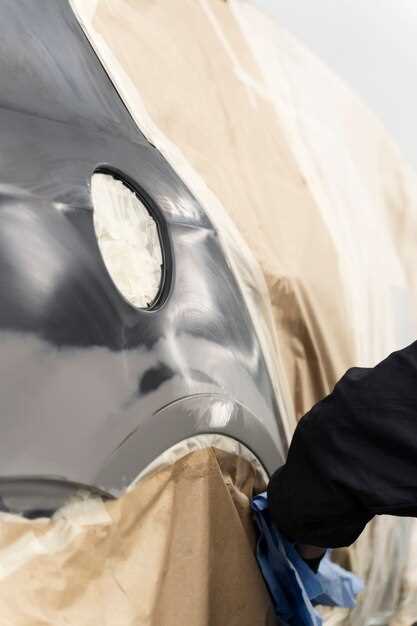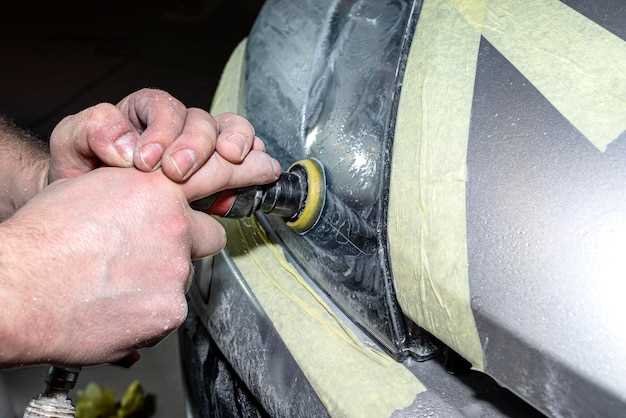
Owning a classic car is not just about transportation; it embodies passion, history, and art. One of the critical aspects of preserving this cherished investment is ensuring proper protection for the paintwork. The paint is the first line of defense against environmental factors and mechanical wear, thus necessitating meticulous care and detailing techniques to maintain its pristine appearance.
Over time, classic cars are vulnerable to various elements such as UV rays, bird droppings, tree sap, and road grime that can corrode and dull the finish. Therefore, implementing effective protection strategies is essential for any classic car enthusiast. By understanding the best practices for paint maintenance, you can safeguard the integrity and beauty of your vehicle while enhancing its resale value.
This article will provide you with practical tips and tricks for protecting your classic car’s paintwork. From choosing the right products to adopting proper cleaning techniques, you will discover how to ensure that your automobile retains its luster for years to come. Whether you are a seasoned collector or a novice, these insights will enable you to enjoy your classic car fully while keeping it in pristine condition.
Choosing the Right Paint Protection Products for Your Classic Car

When it comes to preserving the beauty and value of your classic car, selecting the appropriate paint protection products is essential. The right choice can significantly extend the lifespan of your vehicle’s finish, preventing environmental damage, scratches, and fading.
First, consider using a high-quality ceramic coating. This advanced product forms a durable shield over your car’s paint, providing excellent resistance to UV rays, chemical contaminants, and slight abrasions. Unlike traditional waxes, ceramic coatings bond with the paint, offering long-lasting protection that can last for years.
Another option is paint protection film (PPF). This clear, adhesive plastic wrap acts as a barrier against chips, scratches, and other physical damage. PPF is particularly beneficial for high-impact areas, such as the front hood, fenders, and bumpers. It maintains the original look of your paint while safeguarding it from potential harm.
Don’t underestimate the power of regular detailing products. A gentle, pH-balanced car wash soap, combined with a high-quality microfiber wash mitt, can safely remove dirt and grime without scratching the paint. Follow up with a clay bar treatment to eliminate embedded contaminants that regular washing may miss, ensuring a smooth surface before applying any protective layers.
Finally, when considering wax, opt for synthetic or hybrid options with advanced polymers that can offer a stronger protective barrier than traditional carnauba wax. These products typically provide a hydrophobic effect, helping water bead off and reducing the chances of water spots.
Ultimately, the choice of paint protection products for your classic car should be guided by the specific needs of your vehicle, environmental factors, and your personal preferences. Investing in the right products will not only enhance the appearance of your car but also protect its value for years to come.
Step-by-Step Guide to Properly Detailing Your Classic Car

Detailing your classic car is essential for maintaining its beauty and ensuring the longevity of its paintwork. Follow this step-by-step guide to achieve optimal results.
Step 1: Gather Your Supplies
Before beginning the detailing process, collect all necessary materials. You will need high-quality car shampoo, microfiber cloths, a soft-bristled brush, clay bar, polish, wax, and a paint protection product.
Step 2: Washing the Exterior
Start by rinsing the car with water to remove loose dirt. Use the car shampoo mixed with water to wash the car’s surface using a microfiber cloth. Work from the top down, rinsing frequently to avoid soap drying on the paint.
Step 3: Clay Bar Treatment
After washing, the next step is to use a clay bar to remove embedded contaminants. Lubricate the paint surface and gently glide the clay bar across it. This process smooths the paint and prepares it for polishing.
Step 4: Polishing
Using a high-quality polish, apply a small amount to a polished applicator pad and work it into the paint using circular motions. This step rejuvenates the paint by removing minor scratches and restoring clarity.
Step 5: Applying Wax
After polishing, it’s essential to protect the paintwork. Apply a layer of wax using an applicator pad. This provides a protective layer against environmental elements and enhances the car’s shine. Allow the wax to cure as specified by the manufacturer.
Step 6: Final Touches
Once the wax has cured, buff the surface with a clean microfiber cloth to achieve a brilliant finish. Don’t forget to clean the windows and tires, as these contribute to the overall look of your classic car.
Step 7: Regular Maintenance
To keep your classic car looking its best, regularly wash and wax it as part of your routine maintenance. Consider applying paint protection products to preserve the integrity of the paint.
By following these steps, you will ensure your classic car remains a stunning example of automotive beauty, safeguarded against wear and tear.
Best Practices for Everyday Care and Maintenance of Paintwork
Maintaining the pristine condition of your classic car’s paintwork requires consistent effort and attention to detail. Regular detailing is essential, as it helps protect the paint from environmental contaminants and enhances its overall appearance. Start by washing your car frequently, using a pH-balanced car shampoo to avoid damaging the finish.
When washing, use a microfiber wash mitt and scrub in straight lines rather than circles to prevent swirl marks. Rinse thoroughly, and dry the paintwork with a soft microfiber towel to avoid water spots. Make it a habit to remove any bird droppings, tree sap, or road grime immediately, as these substances can cause significant damage if left untreated.
Additionally, applying a high-quality wax or sealant every few months adds a protective layer over the paint, providing a barrier against UV rays and contaminants. This not only makes future cleaning easier but also enhances the shine and depth of color. When applying wax, follow the product instructions carefully to achieve the best results.
Consider incorporating paint protection film or ceramic coating for long-term protection. These options offer superior resistance against scratches, chips, and environmental hazards. Regularly inspect your paintwork for any imperfections and address them promptly, either through polishing or touch-up paint, to prevent further damage.
Lastly, store your classic car in a climate-controlled environment when possible, and use a breathable car cover to minimize exposure to harmful elements while parked. By implementing these best practices, you can ensure that your classic car’s paint remains in excellent condition for years to come.




